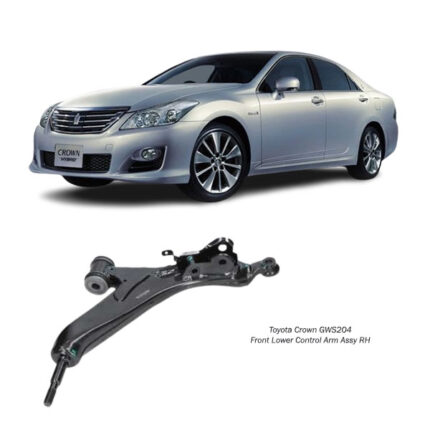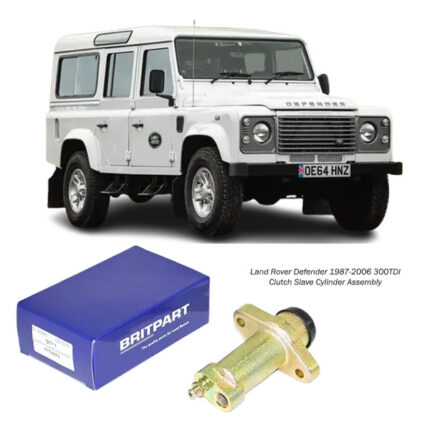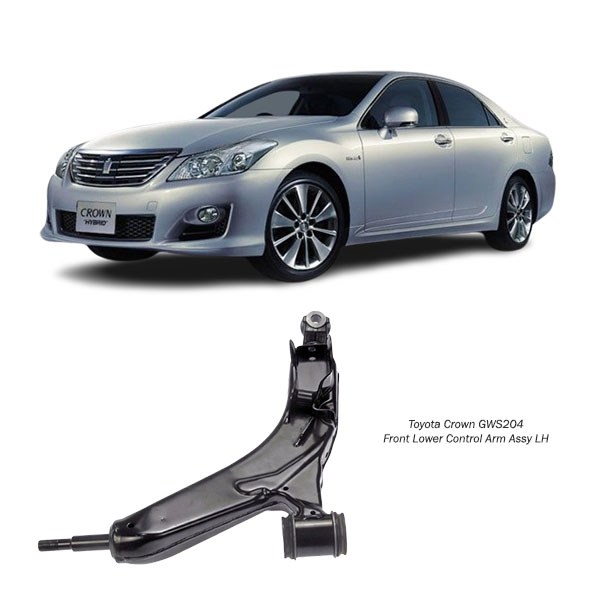Get Toyota Crown GWS204 Front Lower Control Arm Assy LH 48640-30290 in Kenya
The Front Lower Control Arm Assembly (Left Hand – LH) is a critical component of a vehicle’s front suspension system. Located on the driver’s side (left-hand side) of the vehicle, it plays a foundational role in supporting the wheel assembly and connecting it to the vehicle’s frame. Its contribution to wheel alignment, suspension geometry, and steering response is essential for road safety and vehicle handling. Though often hidden beneath the car, its performance affects every mile you drive.
Whether you’re replacing a worn-out part, diagnosing handling issues, or simply improving vehicle performance, understanding the purpose, benefits, potential issues, and installation process of the front lower control arm LH is vital.
What is a Front Lower Control Arm Assembly (LH)?
The Front Lower Control Arm Assembly (LH) is a suspension component that links the chassis (or subframe) of the car to the front wheel hub or steering knuckle. It allows the wheel to move vertically with the suspension while controlling its position laterally (side to side). This freedom of movement is necessary for handling bumps, turns, and other road conditions.
A standard control arm assembly includes:
-
A metal arm (steel, forged iron, or aluminum),
-
Rubber or polyurethane bushings that attach to the chassis,
-
A ball joint that connects to the steering knuckle or hub assembly.
The LH (left-hand) control arm mirrors the RH one but is engineered specifically for the driver’s side geometry and loading pattern.
Primary Functions
1. Suspension Linkage:
The control arm physically joins the wheel hub to the vehicle’s body, ensuring the wheel remains in proper alignment throughout vertical movement caused by uneven roads.
2. Steering Geometry Support:
It helps maintain proper caster, camber, and toe angles, directly influencing the vehicle’s ability to steer precisely and track straight.
3. Shock Absorption:
The bushings within the arm cushion vibrations and road shocks, reducing stress on the frame and offering a more comfortable ride.
4. Load Transfer:
The arm transfers forces from the wheel (acceleration, braking, cornering) into the chassis, ensuring balanced movement and reducing body roll.
Advantages of a Good LH Lower Control Arm Assembly
1. Precision Steering Control
When intact and properly aligned, the control arm allows the driver to maneuver the vehicle smoothly and accurately, even at high speeds or on rough terrain.
2. Comfortable Ride Quality
The bushings and ball joint absorb harshness from the road, creating a cushioned, vibration-free experience inside the cabin.
3. Improved Safety
Proper suspension geometry keeps all four tires in consistent contact with the ground, maximizing traction and braking effectiveness.
4. Reduced Tire Wear
Maintaining the correct alignment angles prevents the uneven tire wear that often results from sagging or damaged control arms.
5. Durability & Long Service Life
High-quality control arms, especially those with sealed ball joints and corrosion-resistant coatings, can withstand harsh road conditions and extreme temperatures for many years.
Disadvantages of a Faulty or Worn Control Arm
1. Handling Instability
A worn bushing or loose ball joint can cause the vehicle to feel loose or unpredictable while turning, increasing the risk of losing control.
2. Steering Vibration
Damaged control arms often cause shaking or vibration in the steering wheel, especially when accelerating or braking.
3. Excessive Tire Wear
Misalignment caused by control arm movement results in feathering or scalloping on tire tread, reducing tire life significantly.
4. Suspension Noise
A clunking or knocking sound when driving over bumps or during braking/acceleration is a common symptom of a failing control arm.
5. Safety Hazard
A completely failed control arm—particularly the ball joint—can result in the wheel collapsing under the car, a dangerous and costly failure.
Signs That the LH Lower Control Arm Needs Replacement
-
Clunking or banging noise from the driver’s front side
-
Unstable or wandering steering
-
Uneven or rapid tire wear
-
Vibration felt in the steering wheel
-
Vehicle pulling to one side while driving
-
Visible cracking, rust, or damage to the control arm
-
ABS or traction control warnings (in severe cases)
Routine inspection during oil changes or suspension servicing can help identify early signs of wear before catastrophic failure occurs.
How to Replace the Front LH Lower Control Arm Assembly
Replacing a lower control arm is a medium-difficulty job for experienced mechanics or DIYers with the proper tools and safety measures.
Tools Required:
-
Floor jack and jack stands
-
Lug wrench
-
Socket and ratchet set
-
Torque wrench
-
Ball joint separator or pickle fork
-
Pry bar
-
Hammer (if needed)
Step-by-Step Process:
-
Prepare the Vehicle:
Park on a level surface, engage the parking brake, and loosen the left front wheel lug nuts. -
Lift and Support the Vehicle:
Use a jack to raise the vehicle and secure it with jack stands. Remove the front wheel completely. -
Locate the Control Arm:
Identify the control arm’s mounting points: two chassis side bushings and one ball joint connecting to the steering knuckle. -
Disconnect the Ball Joint:
Use a ball joint separator or remove the pinch bolt, depending on your vehicle design. Avoid damaging the surrounding components. -
Unbolt the Control Arm:
Remove the bolts or nuts securing the arm to the subframe/body. Use a pry bar if necessary to free the arm from tight bushings. -
Install the New Control Arm:
Position the new LH control arm and secure the bushing mounts first. Then reattach the ball joint to the steering knuckle. -
Tighten to Specification:
Use a torque wrench to secure all bolts and nuts to factory specifications. Improper torque may lead to premature wear or failure. -
Reinstall the Wheel and Lower:
Reinstall the wheel, lower the vehicle, and torque the lug nuts properly. -
Get a Wheel Alignment:
Always follow up with a professional alignment to restore correct suspension geometry.
Materials and Design
Control arms may be made from different materials depending on vehicle type and performance requirements:
-
Stamped Steel: Durable and cost-effective, commonly used in standard vehicles.
-
Forged Iron or Cast Steel: Strong and reliable, often used in heavy-duty or SUV applications.
-
Aluminum Alloy: Lightweight, corrosion-resistant, and used in performance or premium vehicles.
Some arms come with pre-installed ball joints and bushings, simplifying the replacement process and ensuring quality fitment.
Follow us on Facebook for more parts.





Reviews
Clear filtersThere are no reviews yet.